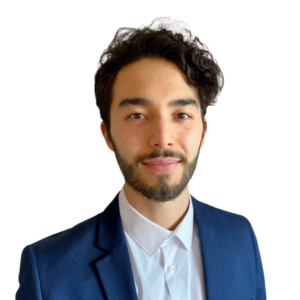Sexual exploitation, abuse, and harassment (SEAH) of vulnerable individuals in return for aid remain pervasive in the development and humanitarian assistance sector. Despite global outcry and efforts to address this, the perpetrators of sexual misconduct all too frequently circulate across the sector. Where weak or inconsistent SEAH safeguarding mechanisms are in place, vulnerable communities fall victim, and the integrity and reputation of development and humanitarian work is compromised.
The Inter-Agency Standing Committee on protection from sexual exploitation and abuse found that 25% or less of the affected population in 11 countries had safe and accessible SEAH complaint channels. Similarly, the UK Charity Commission, the charity regulating body in the UK, reported a 36% increase in serious incidents over the last two years. The UK Charity Commission maintains that an increase in reported incidents proves that safeguarding complaint mechanisms are working. However, it concedes that the number of underreported complaints remains high. Likewise, the US Agency for International Development (USAID)’s Office of Inspector General found that the agency faces multiple barriers to monitor implementing partners effectively, and track allegations of SEAH in its programming.
Prevention as the first step
Kelsey Hope, CEO of a UK-based security risk advisory group, maintains that prevention should be the first step for any organization to safeguard against SEAH. By investing in preventative measures, organizations undermine conditions that would allow abuses to fester. Over seven months in late 2020 and early 2021, Humentum participated in a global community of practice on SEAH. Convened by USAID and the Ministry of Foreign Affairs of the Netherlands, it provided opportunities to identify and share models, best practices, and practical solutions for preventing the circulation of perpetrators of sexual misconduct among organizations in the sector. The convenings culminated in the development of a roadmap for continued learning. During a final workshop, USAID Administrator Samantha Power, Netherlands Minister of Foreign Affairs, Sigrid Kaag, and OECD SEAH Chair, Susanna Moorehead, and OECD Development Co-operation Directorate Director Jorge Moreira de Silva, committed to carrying forward the community’s recommendations for greater employment accountability, referencing, and screening in the international development and humanitarian aid sector.
Vetting and screening systems serve to deny SEAH perpetrators from re-entering the sector through different organizations and prevent further abuse. The United Nations has an organization-wide screening system called “Clear-Check” that collates information on individuals who have allegations against them or investigations pending. It also records cases of individuals who resigned before the investigation was completed. As of May 2021, Clear Check has recorded more than 300 perpetrators and issued over 90,000 screening requests. These screening systems are far from perfect and have yet to be implemented across the entire sector, but they are a promising option. At the organizational level, conducting thorough background checks can also serve as a precautionary measure to the re-employment of bad actors.
Another key preventative measure is building an organizational culture that normalizes safeguarding mechanisms and emboldens its staff to report allegations. The Violence Against Women and Girls Helpdesk report 2021 undertook an audit of 137 executives of organizations and found a clear ‘symbiotic relationship’ between reporting and organizational culture. A UN appeals office case study reveals that employees are often fearful of speaking up as they all too frequently face retaliation after reporting. To build an organizational culture that values safeguarding and HR management, leadership should include safeguarding obligations in job descriptions, provide training and codes of conduct, and undertake reference checks and criminal background checks in hiring. They should also implement a top-bottom, bottom-top initiative to reform organizational culture, which is progressive, repeated, and familiarized. Empowering every complaint officer, staff member, and victim of SEAH to report is fundamental to achieving accountability.
Programmatic measures to protect individuals
Humentum accompanies organizations as they embark on the journey to build an organizational culture that values safeguarding. In partnership with GenderTech Enterprises, we offer a digital Safeguarding Diagnostic tool. This provides senior executives and managers with training in international safeguarding standards, compliance, best practices, and organizational culture reform to address safeguarding at structural and individual levels. Moreover, Humentum hosts various learning opportunities on safeguarding through our very own Humentum Learning Service (HLS). This self-directed virtual learning platform hosts safeguarding trainings for all levels of staff and leadership. In partnership with CHS Alliance, it offers specialized workshops, to train investigators to examine credible allegations and pursue a victim-centric model of investigations.
Finally, organizations can prevent SEAH abuses by proactively examining SEAH vulnerabilities in their programming. All projects should include risk assessments that create clear SEAH-risk policies, messaging, and procedural tools for employees and the respective communities they service. Instead of focusing solely on the organization’s financial, legal, or reputational risks, emphasizing the risks of the project on the people impacted makes room for resources and targeted mechanisms to address safeguarding issues. Humentum’s Safeguarding Diagnostic Tool provides organizations with a risk management and risk assessment module for leadership teams to integrate into their programming and organizational policies.
Ultimately, safeguarding measures can serve to prevent SEAH abuses while undergirding the integrity of the development and humanitarian assistance sector. More comprehensive screening systems, HR management to inform and reform organizational culture, and emphasizing SEAH-risks in project and organization-wide assessments can help steward change in the direction of those most impacted by, and in need of, the sector’s programming.
Learn more about our safeguarding work
©Photo: iStock/patpitchaya


